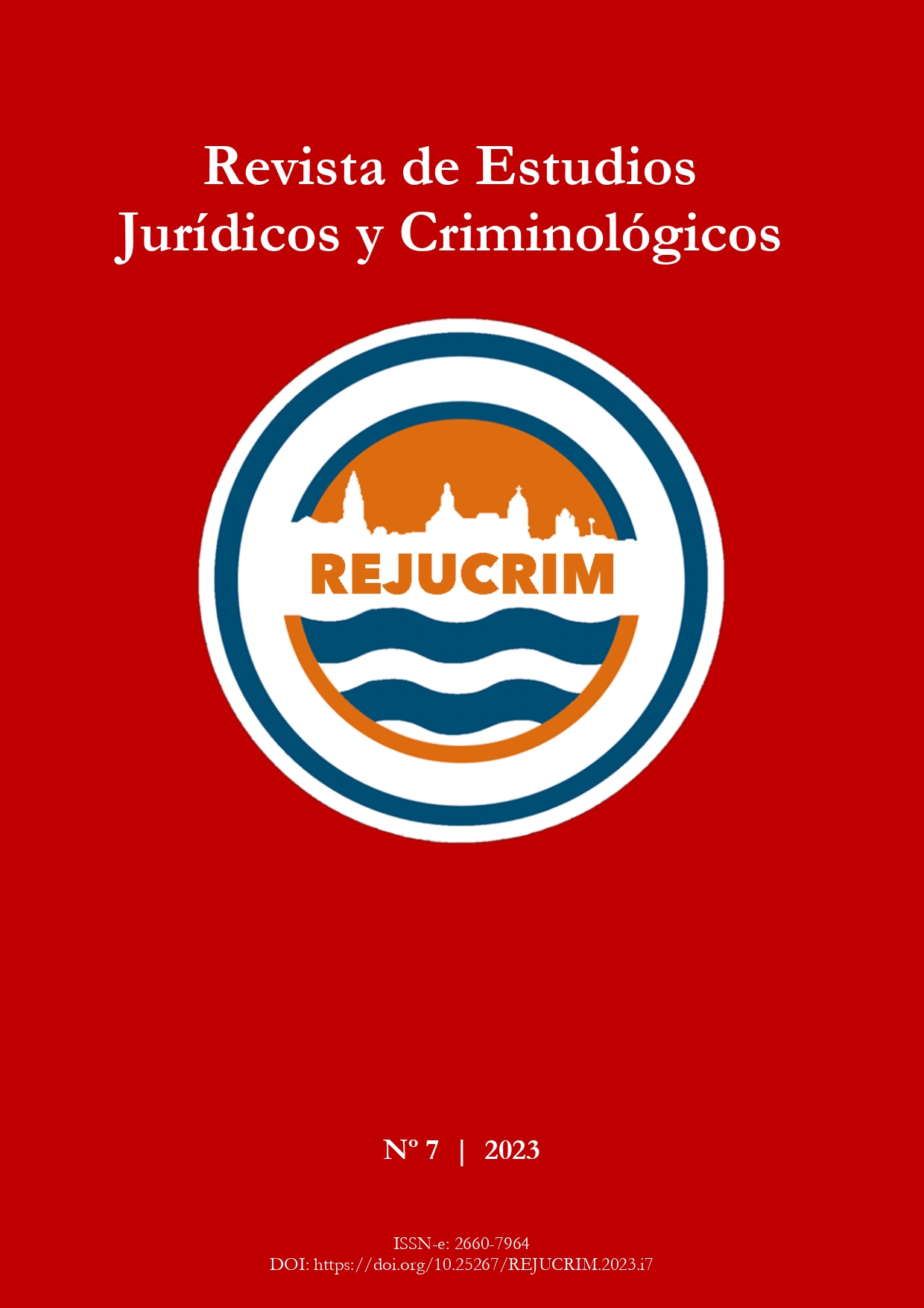Measurement and mapping of crime concentration in micro places
Abstract
Environmental Criminology studies the geography of crime: it has an inherently geographic quality since it occurs in a given space. Within this framework, the spatial distribution of crime is analysed to identify hot spots that reveal information about where it is concentrated, that is, where crimes occur most frequently. Hot spots also show helpful information about the environment where the crime occurs. Although there are different methodologies to measure criminal concentration, the most widespread is the Crime Concentration Law, which uses micro-places consisting of street segments. With this methodology, in the present work, different types of crimes that occurred in the Autonomous City of Buenos Aires during the year 2021 were analysed. First, the concentrations of these crimes were measured according to the specific ranges of the Crime Concentration Law. Second, the results were mapped using a Geographic Information System (GIS). Finally, the generated maps of hot spots showed the concentration of crime in street segments, becoming valuable tools for crime prevention.
Keywords
Downloads
How to Cite
License
Copyright (c) 2023 Pedro Rozenwurcel

This work is licensed under a Creative Commons Attribution-NonCommercial-NoDerivatives 4.0 International License.
References
AMEMIYA, M. y OHYAMA, T., “Toward a test of the “Law of Crime Concentration” in Japanese cities: a geographical crime analysis in Tokyo and Osaka”, Crime Science, 8, 2019.
ÁNGELES, G., y GENTILI, J. “Cartografía General y Temática”. Departamento de Geografía y Turismo, Universidad Nacional del Sur, Buenos Aires, 2010.
BECK, J. y DELANEY, C., “Problem Location Analysis using the Crime Analysis Solution. Law Enforcement and Justice”, en https://www.esri.com/en-us/industries/blog/articles/problem-location-analysis-using-the-crime-analysis-solution/, 2021.
BERNASCO, W. y STEENBEEK, W., “More Places than Crimes: Implications for Evaluating the Law of Crime Concentration at Place”, Journal of Quantitative Criminology, 33, 2017.
BRAGA, A. A., HUREAU, D. M. y PAPACHRISTOS, A. V., “The Relevance of Micro Places to Citywide Robbery Trends: A Longitudinal Analysis of Robbery Incidents at Street Corners and Block Faces in Boston”, Journal of Research in Crime and Delinquency, 48(1), 7–32, 2011.
BRANTINGHAM, P. J. y BRANTINGHAM, P. L., “Criminality of Place: Crime Generators and Crime Attractors”, European Journal of Criminal Policy and Research, 3: 5– 26, 1995.
CHAINEY, S. “Understanding Crime”. Esri Press. Edición de Kindle, 2021.
CHAINEY, S. y RATTCLIFFE, J. “GIS and Crime Mapping”. John Wiley & Sons, Ltd, England, 2005.
CHAINEY, S., PEZZUCHI, G., ROJAS, N., RAMÍREZ, J., MONTEIRO, J. y VALDEZ, E., “Crime concentration at micro-places in Latin America”, Crime Science, 8, 2019.
COHEN, L. E. y FELSON, M., “Social change and crime rate trends: A routine activities approach”, American Sociological Review, 44 (4), 1979, pp. 588–608.
DEL BOSQUE GONZÁLEZ, I., FERNÁNDEZ FREIRE, C., MARTÍN-FORERO MORENTE, L., y PÉREZ ASENSIO, E. “Los Sistemas de Información Geográfica y la Investigación en Ciencias Sociales y Humanas”, ed. C. E. de C. de E. Locales, Madrid, 2012.
ECK, J. E. y WEISBURD, D., “Crime places in crime theory”, Crime and place. Crime Prevention Studies, Monsey, NY: Willow Tree Press, vol. 4, 1995, pp. 1–33.
ESRI, “¿Qué son los datos ráster?”, en https://desktop.arcgis.com/es/arcmap/10.3/manage-data/raster-and-images/what-is-raster-data.htm, consultado el 05/10/2022.
GILL, C., WOODITCH, A. y WEISBURD, D, “Testing the Law of Crime Concentration at Place in a Suburban Setting: Implications for Research and Practice”, Journal of Quantitative Criminology, 33, 2017.
GROFF, E. R., WEISBURD, D. y YANG, S.-M, “Is it Important to Examine Crime Trends at a Local ‘“Micro”’ Level?: A Longitudinal Analysis of Street to Street Variability in Crime Trajectories”, Journal of Quantitative Criminology, 26, 2010, pp. 7–32.
GROFF, E., “Informal social control and crime events”, Journal of Contemporary Criminal Justice, 31, 2015, pp. 90-106.
HIPP, J. R., y WILLIAMS, S. A., “Accounting for Meso or Micro Level Effects When Estimating Models Using City Level Crime Data: Introducing a Novel Imputation Technique”, Journal of Quantitative Criminology, 37(4), 2020, pp, 915-951.
IGARZÁBAL DE NISTAL, M. A. (2011). “Mapa del delito”, Editorial Nobuko, Buenos Aires, 2011.
KIM, S., LAGRANGE, R. y WILLIS, C., “Place and Crime: Integrating Sociology of Place and Environmental Criminology”, Urban Affairs Review, 2012, pp. 49–141.
LEE, Y., ECK, J. E., SOOHYUN, O, y MARTÍNEZ, N. N. (2017). “How concentrated is crime at places? A systematic review from 1970 to 2015”. Crime Science, 6(6), 2017, pp. 1-6.
MIRAGLIA, M., FLORES, A. P., RIVAROLA y BENÍTEZ, M., D´LIBERIS, M., GALVÁN, L., NATALE, D., y RODRÍGUEZ, M., “Manual de Cartografía, Teleobservación y Sistemas de Información Geográfica”, Laboratorio de Sistemas de Información Geográfica, Instituto del Conurbano, Universidad Nacional General Sarmiento, Buenos Aires, 2010.
OLAYA, V., “Sistemas de Información Geográfica”, extraído de https://www.icog.es/TyT/files/Libro_SIG.pdf, 2014.
PIZA, E., y CARTER, J., “Predicting Initiator and Near Repeat Events in Spatiotemporal Crime Patterns: An Analysis of Residential Burglary and Motor Vehicle Theft”, Justice Quarterly, 35, 2017.
RATCLIFFE, J., “Crime Mapping: Spatial and Temporal Challenges”, Handbook of Quantitative Criminology, Piquero, D. y Weisburd, A. R. editores, Springer, 2010.
SANTOS, R. B., “Crime Analysis with Crime Mapping”. Sage Publications Inc., 2005.
SANTOS, R. B. “Crime Analysis with Crime Mapping”, Fourth Ed. SAGE, United States of America, 2017.
SHERMAN, L. W., GARTIN, P. y BUERGER, M. E. (1989), “Hot spots of predatory crime: Routine activities and the criminology of place”, Criminology, 27 (1), 1989, pp. 27–55.
WEISBURD, D. (2015). “The law of crime concentration and the criminology of place”. Criminology, 53 (3), 2015, pp. 133–157.
WEISBURD, D., GROFF, E. R., y YANG, S. M., “The Criminology of Place”, Oxford University Press, 2012.
WORTLEY, R. y MAZEROLLE, L., “Environmental Criminology and Crime Analysis: situating the theory, analytic approach and application”, Environmental Criminology and Crime Analysis, Willan Publishing, 2008, pp. 1–18.







